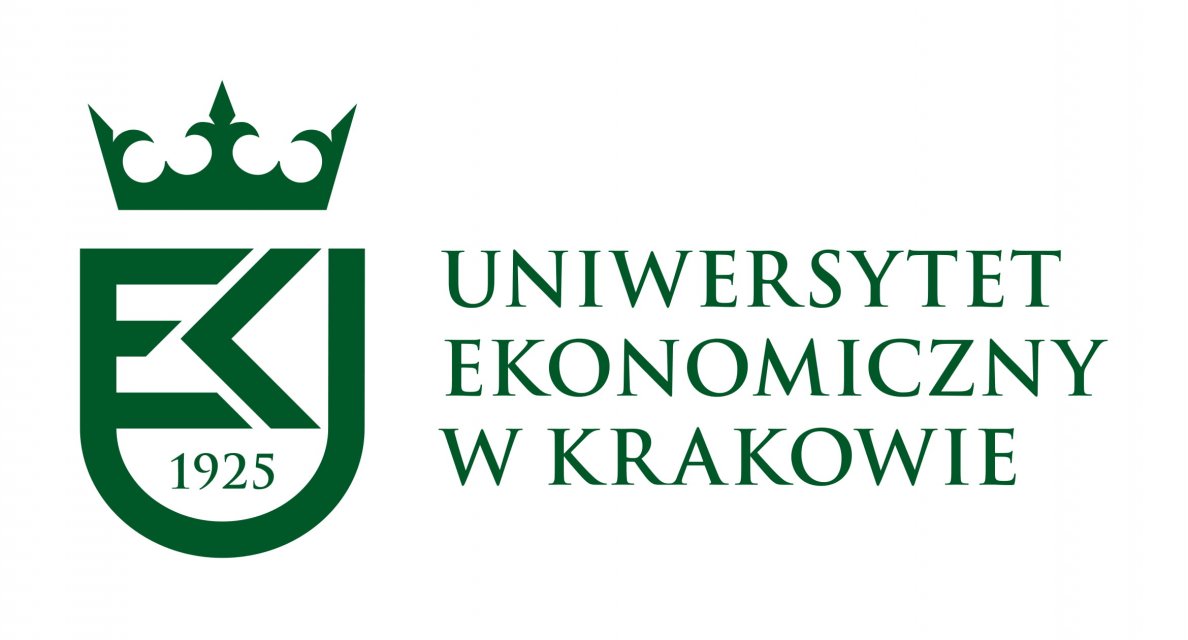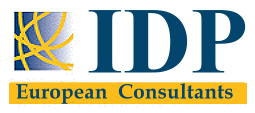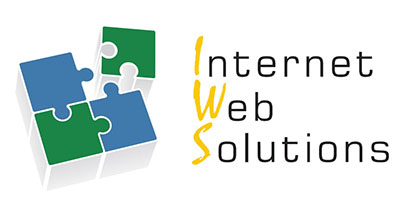Training
All our courses
Accessible public aid for enterprises-tailored solutions + where to find them (EQF: 3-5)
The State aid is granted to an entrepreneur by the state or with the state funds, on terms more favorable than those offered in the market. Since the state aid can threaten to distort the rules of competition, it is allowed only in specific cases and under specific rules.
Therefore, it is worthwhile to learn about the types and conditions of the public aid that can support an entrepreneur in difficulty.
Business models based on flexible organizational structures - implementation of new technologies, digitization strategy (EQF: 3-5)
The Business model is the basis for the operation of most companies. Every company bases its operations to a greater or lesser extent on a business model. Every business activity should have a specific purpose. Analysing the period of the Covid-19 pandemic and planning for the future, one will come to the conclusion that many assumptions about the nature of business have lost their rightness. The pandemic revealed vulnerabilities in many dimensions. It has affected healthcare, education, transport, business, commerce, technology, the financial sector and social systems, forcing a review of basic assumptions and the principles, processes and technologies that support them.
Reducing risk, however, is only half the battle. We still need to develop business models that are not only resilient to disruption, but also enable to get innovation started and to take advantage of value. To achieve this, we also need to use the experience gained to shape new markets, new product and service offerings, new revenue streams and, most importantly, new value for a connected world after the COVID-19 pandemic.
The structure of an organization is a way of formally defining the relationships and dependencies between its participants, it is a very broad concept. There are many types of it distinguished by different criteria.
It is important to understand that there will be no 'new normality'. Instead of this, we get the opportunity to analyse these sensitive areas in current business models with this experience in mind and use the new knowledge to build more modern and resilient organizations
The biggest challenge of digitization is the first obstacle to overcome: early implementation. Companies should realize the added value and opportunities that digitization brings.
Development of new e-commerce / m-commerce channels (EQF: 3-5)
E-commerce is the activity of buying and selling goods or services using the Internet, while m-commerce refers to those transactions done using mobile phones and similar devices.
E-commerce and M-commerce open new business-consumer relations and business opportunities.
EU Framework and Resources for Cybersecurity of SMEs (EQF: 3-5)
SMEs are the backbone of the European economy and they have been increasingly the target of cyber-attacks. In the last decades, the EU has increased its engagement and competencies in cybersecurity. This module will help to understand better how the EU deals with cybersecurity and which resources have European SMEs to face the challenges from cyber-attacks.
Click to seeFlexible solutions in working time (EQF: 3-5)
This session is focused on familiarizing candidates with the notion of flexible work time. Initially the term flexicurity is being presented along with its two dominant approaches. The term digital nomads is being explained as well as its advantages and disadvantages. Next the topic of mainintaing consistency is being presented followed by tips for setting an efficient work schedule. Finally, concerning how work around customer and employee needs, guidelines for its issue are being provided.
Click to seeFocusing on Listening to Customers (EQF: 3-5)
This session is focused on tools and techniques to actively listen to customers and the important messages they are sending to us (directly and indirectly). The focus will include both the secondary data available but also how to best collect and utilise primary data to better understand today’s customers but also tomorrow’s. Integration of effective customer listening helps to identify not only current issues but also opportunities for the future and how to pursue or resolve them as well as creating a stronger relationship with our customers leading to greater loyalty.
Click to seeHealth and work-life balance disorders - Self-leadership and self-awareness (EQF: 3-5)
Self-awareness and self-leadership are two mutually related topics that are gaining relevance in management literature and practice. Developing self-awareness helps improving business success but also allows individuals to more easily cope with external shocks such as pandemics. It is also one of essential ingredients of self-leadership. This unit looks at meaning of both concepts and explains their relevance for individuals and organisations. Practical advices for personal self-awareness and self-leadership development are provided.
Click to seeHealth and work-life balance disorders - Work-life balance disorders (EQF: 3-5)
Work-life balance (WLB) is a topic that is increasingly being explored and is of interest to both the organization and the individuals. Individuals benefits are better health and quality of life, what influences organizational productivity and performance. This unit, entitled Work-Life Balance Disorders looks at explanations of WLB and distinguishes between different types of WLB disorders. It also discusses and explains the benefits of WLB for both individual and organisation and identifies ways to improve WLB and reduce WLB disorders.
Click to seeImplementing the omnichannel model and increasing convenience (EQF: 3-5)
Omnichannel is a model that aims to give customers a tailored experience via a variety of communication channels, to turn visits into sales. It enables a wider range of opportunities to get in touch with potential customers.
Click to seeIncreasing the Level of Customer Service (EQF: 3-5)
This session is focused on evaluating the ever increasing pre- and post- purchase customer service requirements of both digital and non-digital customers. Today customers are more cognizant of the services provided by suppliers and most often make a decision based on this. Both digital and non-digital customer service will be looked at as well as ways of identifying customer needs and integrating these into offerings proposed.
Click to seeIncreasing the level of security of online transactions (EQF: 3-5)
Online transactions are on the rise. They have increasingly become part of our lives, to the point that, nowadays, anything we imagine can be bought online.
Despite doing on average several transactions a week, average users might not know vital information on how to safeguard their security when buying or selling online and stay away from all kinds of cyberthreats such as identity fraud, theft, or malware.
Maintaining the new online clientele and accommodating the needs of digital and non-digital generations (EQF: 3-5)
Through the pandemic, the way in which companies have adapted to their customers (current and new) has been critical to their survival. This unit will focus on digital marketing strategies to attract new customer and maintain existing ones. We will also look at the differences between digital versus non-digital generations, the differences between these generations, and how to balance the two.
Click to seeNet-iquette in business contexts (EQF: 3-5)
Description
Effective online communication is crucial in real-life business commitments and relationships. In the digital era, business actors should master all tools for online communication such as emails, instant messaging, social media and video calls.
Psychological needs and mental well-being - Empathy in the workplace (EQF: 3-5)
Empathy is a complex phenomenon, and this unit, entitled Empathy in the Workplace, looks at definitions of empathy and distinguishes between different types of empathy. It also discusses employee empathy, explains the benefits of empathy in the workplace, and identifies ways to improve empathy in the workplace. Finally, it discusses empathic leadership and the characteristics of empathic leadership and empathic leaders.
Click to seePsychological needs and mental well-being - Maintaining connection with the world around you (EQF: 3-5)
Our well-being is closely connected with the state of our digital environment that mediates our interaction with it, which poses pressing questions concerning the impact of digital technologies on our well-being. The term ‘digital well-being’ is used to refer to the impact of digital technologies on what it means to live a life that is good for a human being. This unit, entitled Maintaining connection with world around you, looks et the definitions of digital well-being. It also identifies ways to maintain connection with your team and rules for successful remote work communication. Finally, it determines activities for maintaining connection with world around you.
Click to seeRemote work regulations (including the projected ones) and practice of using them (EQF: 3-5)
The COVID-19 pandemic triggered the legislative work on irregulated sphere of remote work in Poland.
A high degree of uncertainty associated with the reopening of businesses entails having to comply with a number of strict hygiene and safety regulations, and the continued restrictions as well as physical distancing may not make it possible for the entire workforce to return safely to the employer’s premises. Remote work (teleworking) will remain necessary for at least some part of the workforce during this period.
High-risk and vulnerable groups must be protected, which is why home-based remote work (telework) will be a very attractive alternative at least for the duration of the pandemic
Expanded use of remote work may not end with the pandemic, but could become part of the ’new and better normal’ for years to come, supported by digitalization, advanced communication, and cloud technologies.
For the above-mentioned reasons, it is very relevant to discuss those topical issues in a separate training.
Currently, remote work in Poland is governed by Article 3 of the Act of 2 March 2020 on special arrangements relating to the prevention, counteracting and combating COVID-19, other infectious diseases and emergencies caused by them (Journal of Laws of 2020, item 374, as amended – ‘COVID-19 Act‘). That provision was introduced in connection with the outbreak of the pandemic and can only be applied for the duration of either the so-called state of epidemic emergency or the state of epidemic declared due to COVID-19, as well as for a period of 3 months after their revocation. This means that as of now - it is a temporary provision.
However, the Polish legislator has long been envisaging to create a new legal framework for the remote work. Its provisions are to be incorporated in the Polish Labour Code. Such regulations are to mix three kinds of remote work: total or partly-remote work as a rule, remote work in the periods of state of epidemic or ‘vis mayor state’ and the so-called ‘occasional remote work’ (to be available for 24 day in a year).
The envisaged provisions are to provide for remote work to be introduced by means of an agreement of the employer and the employee; as well as for the employer to be bearing the costs of such work. The latter will be to cover energy, internet and telephone costs, or pay a lump sum in that regard.
The main objective of the present training is to learn the current and envisaged provisions and how to use them in practice (including practical issue that may arise in the future).
Special suspension of some social employer’s obligations (EQF: 3-5)
A number of anti-crisis legal institutions have been introduced in Poland, which are aimed at facilitating the organization of work of employees and flexible development of work (e.g. flexible work time institutions), as well as limiting the social obligations of employers and solutions aimed at providing financial support to entrepreneurs in order to maintain workplaces. The aim of this training is learning more about anti-crisis possibilities related to suspension, reduction or limiting some social benefits of employers’s obligations during crisis time.
Click to seeState aid to co-finance the jobs (EQF: 3-5)
The Polish legislator introduced special support instruments in connection with the spread of the SARS-CoV2 virus. The first four anti-crisis shields were adressed to all employers, the following anti-crisis shields were adressed to employers of most vulnarable sectors, especially touristic sector, culture institutions, gastronomy etc. There were also some special simplier instruments for MSME.
Click to seeUse of cashless solutions (EQF: 3-5)
In recent years, there has been an increasing number of innovations in cashless payments. Work on new solutions in this area and the growing interest in cashless payments has accelerated by the COVID-19 pandemic. This trend is an opportunity for businesses due to a number of advantages related to the implementation of cashless solutions. The course, apart from presenting current trends in the aforementioned area, will also outline the most common fees in payment transactions, the security measures used and legal issues concerning interchange fees.
Click to seeUse of cloud computing solutions (EQF: 3-5)
Cloud Computing allows on-demand remote access to IT resources from a network of external sources (servers) via the Internet. Files or apps on the Cloud can be uploaded, downloaded, shared or modified by any authorised user.
Plus, this file storing technology is secure both software and hardware-wise, also serving many purposes: specific apps, internal network and database management, media access, computing power, storage…
Value proposition in post-pandemic business models: innovative approaches to marketing (EQF: 3-5)
This compact course on marketing aims to support SMEs to define market positioning strategies. Moreover, it provides the basics to define communication strategies, engage with external public, creating and retaining value for one’s own brand.
Click to seeWays of Building Strong Relationships With Clients and Meeting Their Various Needs (EQF: 3-5)
There is nothing more important in business that the relationship a company builds with its customers; companies cannot simply be an ‘island’ but must rather focus on the interconnectedness of their business with their clients. In this session the focus will be on customer relationship building which goes beyond the aspect of traditional business networking. The focus will be on co-development of product and/or services and deepening business relationships in a digital world while maintaining trust.
Click to seeWork-life balance in tele-working settings (EQF: 3-5)
The Covid-19 pandemic resulted in a dramatic increase in telework in Europe. Although benefiting from greater flexibility and autonomy, teleworkers often had a greater workload, with a negative impact on work-life balance.
An inadequate work-life balance in tele-working settings can have a very negative impact on workers and their wellbeing. Workers and managers should follow certain rules/recommendations to ensure a better work-life balance for remote workers.
Workload and the Quality of Work Organization (EQF: 3-5)
This session is focused on fimiliarizing students with the notion of digital workload. The types and characteristics of digital workloads are analysed as well as the topics of stress and anxiety. Also, tips for improving stress and anxiety resilience are provided. Finally, concerning how to build a quality focused digital organisation, the crucial pillars are being elaborated.
Click to see











